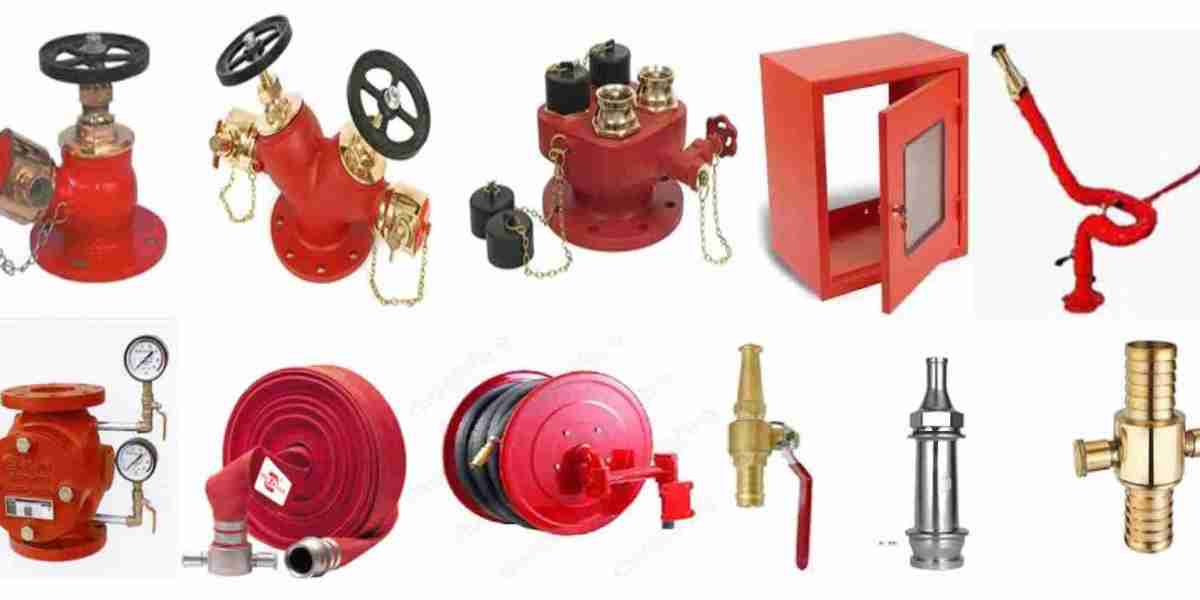When it comes to fire safety, prevention is always better than cure. Every building—whether residential, commercial, or industrial—must have a reliable fire hydrant system to ensure immediate access to water during emergencies. But choosing the right hydrant system for your building can be challenging. With different types, components, and compliance standards to consider, it’s important to make an informed decision that guarantees safety, efficiency, and long-term reliability.
This blog will guide you through the key factors to consider when selecting the right fire hydrant system for your building, helping you stay compliant and well-protected.
What Is a Fire Hydrant System?
A fire hydrant system is a comprehensive network of water supply equipment—pumps, pipes, valves, and outlets—designed to provide firefighters with quick access to high-pressure water for firefighting. It’s a crucial part of every fire protection system, ensuring that water is available exactly when and where it’s needed during a fire emergency.
Installed strategically within a building or premises, these systems allow water to be delivered through hydrant valves, hoses, and nozzles to extinguish fires effectively.
Why Choosing the Right Fire Hydrant System Matters
Not all buildings require the same type of fire hydrant setup. The right system depends on several factors such as building size, occupancy type, water availability, and local fire safety regulations. Selecting an inappropriate or under-capacity system can lead to poor water pressure, delayed fire response, and even system failure during an emergency.
A well-designed fire hydrant system ensures:
- Consistent water pressure and flow
- Effective fire suppression
- Compliance with fire safety standards
- Long-term durability and reduced maintenance costs
Factors to Consider When Choosing a Fire Hydrant System
1. Building Size and Structure
The height and floor area of your building are crucial determinants. High-rise buildings require wet risers with powerful pumps, while smaller or mid-rise properties may only need dry risers or external yard hydrants.
2. Water Supply Availability
A reliable water source is essential. Assess your building’s water storage capacity and pressure levels. If water availability is limited, consider installing a dedicated fire water tank or booster pump to maintain pressure.
3. Fire Risk Assessment
Every property faces different levels of fire risk. Industrial buildings with combustible materials need a more robust fire protection system compared to office spaces. Conduct a professional fire risk analysis before selecting the right system.
4. Local Fire Safety Regulations
Compliance with the National Building Code (NBC) and local fire department standards is mandatory. Ensure your chosen system meets the required specifications for water pressure, hydrant placement, and equipment type.
5. Quality of Components
Investing in ISI-marked and certified components ensures reliability and safety. Key parts include:
- Landing Valves for water outlets
- R.R.L. Fire Hoses and Thermoplastic Hose Pipes for water flow
- Hose Boxes and Reel Drums for storage
- Branch Pipes and Couplings for controlling discharge
Choosing high-quality equipment from a reputed fire equipment supplier guarantees long-term durability and compliance.
6. Maintenance and Inspection Needs
A system that’s easy to inspect and maintain will ensure better performance in emergencies. Look for setups with accessible valves, corrosion-resistant pipes, and test points for regular maintenance. Partnering with a professional fire hydrant maintenance service ensures your system remains fully operational year-round.
7. Professional Installation
Even the best fire hydrant components won’t work effectively if installed improperly. Always hire certified fire protection companies for design, installation, and testing to ensure the system functions correctly under pressure.
Benefits of Choosing the Right Fire Hydrant System
A well-chosen fire hydrant system offers multiple benefits beyond safety compliance:
- Quick Fire Response: Enables firefighters to act immediately, reducing damage and loss.
- 24/7 Readiness: Ensures water supply and pressure are available at all times.
- Long-Term Value: High-quality systems reduce maintenance costs and extend lifespan.
- Regulatory Compliance: Helps your building meet national fire safety codes and insurance requirements.
- Peace of Mind: Provides assurance that your property and people are protected.
Common Mistakes to Avoid
When selecting a hydrant system, avoid these common pitfalls:
- Ignoring professional fire safety assessment
- Choosing low-quality or uncertified equipment
- Neglecting maintenance and pressure testing
- Overlooking accessibility or coverage areas
- Failing to meet NBC or IS standards
Avoiding these errors ensures your system functions efficiently and reliably when needed most.
Conclusion
Choosing the right fire hydrant system for your building isn’t just about meeting legal requirements—it’s about safeguarding lives and assets. Consider factors like building type, water supply, risk level, and quality of components before making a decision.
By partnering with a trusted fire equipment supplier and ensuring professional installation and maintenance, you can create a powerful, compliant, and efficient fire safety system that stands ready to protect your premises at any time.
When it comes to fire protection, the right hydrant system is not an expense—it’s an investment in safety.





